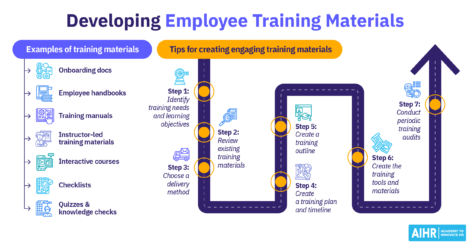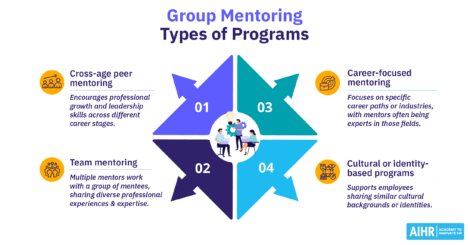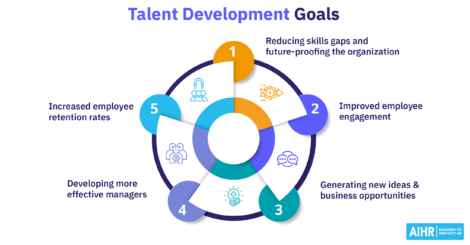ADDIE vs. SAM: Key Differences To Master Training & Development
“If the process you use meets your requirements and produces the quality product you want, you have the right process for you.” That’s SAM creator Dr. Michael Allen’s advice for choosing the correct learning model. But is it really that simple?
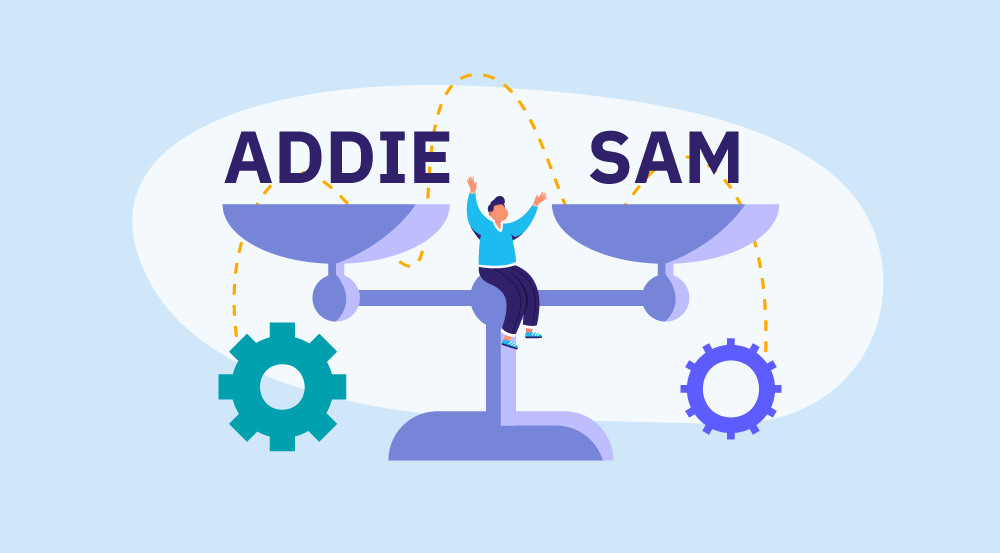
The ADDIE vs. SAM debate has been going on since 2012 when Dr. Michael Allen introduced a strong competitor to the ADDIE model in the form of SAM. Although these are not the only learning models available, they remain two of the most popular. But as a Learning & Development professional, how do you know which e-learning model is right for your organization and its employees?
This article will explore both training and development models in detail, including their key advantages and disadvantages, when to use which model, and best practices for HR professionals when using instructional design models.
Contents
What is the ADDIE model?
What is SAM?
Benefits and drawbacks of the ADDIE Model
Advantages and disadvantages of SAM
ADDIE vs. SAM: Key differences
ADDIE vs. SAM vs. Agile Models
When to use the ADDIE Model
When to use SAM
Using instructional design models: Best practices for HR professionals
What is the ADDIE model?
The ADDIE model is a systematic instructional design framework consisting of five consecutive phases:
- Analysis phase: Discovering what training or learning your team needs.
- Design phase: Defining learning objectives based on your findings.
- Development phase: Developing appropriate learning modules.
- Implementation phase: Rolling out your training initiative and giving employees access to the learning modules.
- Evaluation phase: Measuring the skills and knowledge employees have gained and collecting feedback from them.
Florida State University (FSU) developed the ADDIE training model in 1975 for military purposes, which is why it’s built on a precise and cumulative approach. ADDIE is sometimes known as a “waterfall” design method because each step builds on the previous one, meaning each model phase must be carefully completed before moving on to the next.
For this reason, the ADDIE learning model suits methodical workers. It works well for structured, comprehensive projects that need a measurable model. However, unexpected changes to project goals can move you back to the analysis phase, and discovering mistakes later on can make it tricky to pivot due to a lack of flexibility.
The ADDIE model could also call for a significant investment of time and money because of the upfront analysis and planning.
Example of the ADDIE Model
Let’s consider a hypothetical example of an organization that wants to improve all its employees’ customer service skills. Below is what the five stages of the ADDIE model might look like for this company.
Analysis phase
HR creates and sends out an employee survey and analyzes performance metrics, both of which reveal a company-wide lack of customer service skills. In addition, the feedback from customer satisfaction surveys shows a need to train employees to handle conflict and improve communication with customers.
Design phase
Based on their findings, the HR team sets some learning objectives:
- Improve conflict resolution skills
- Increase understanding of customer needs
- Improve verbal and non-verbal communication techniques.
They decide on a blended learning approach, combining online learning modules with in-person training sessions. HR also plans to use quizzes and role-playing scenarios to assess the effectiveness of the training.
Development phase
HR develops interactive e-learning modules to cover various theoretical aspects of customer service. This includes how to communicate effectively and resolve conflict. The team also produces videos presenting real-life scenarios and supporting materials to facilitate role-playing exercises in workshops.
Implementation phase
The HR team uploads the e-learning modules to the company’s LMS and gives employees access to these. They also schedule in-person workshops so that employees can learn online and face-to-face. Additionally, they build their knowledge and practice their skills while receiving direct feedback.
Evaluation phase
In the final stage of the ADDIE model, employees must take post-training surveys and quizzes to measure their knowledge and skills gains. HR monitors customer satisfaction surveys and performance metrics after training to gauge the overall effectiveness of improving customer service. HR then collects feedback from employees on the training program to ensure continuous improvement.
What is SAM?
Dr. Michael Allen created SAM (Successive Approximation Model) as a quicker, more creative training model. It’s a rapid development model that opts for a continuous iterative approach throughout the development cycle rather than ADDIE’s linear, step-by-step approach.
The SAM model consists of three main phases:
- Prepare: Gather information.
- Design: Design appropriate training based on the findings, make a prototype, and then review it (continuous process).
- Develop: Develop, implement, and evaluate the training module (continuous process).
This agile model relies heavily on quick solutions, testing, and pivoting directions as you go. It suits employees or teams who think well on their feet, embrace change, and work on tight deadlines.
SAM is particularly useful for developing dynamic and engaging training programs, especially when building soft skills. However, the model requires continuous collaboration and communication, which can make it slow and unpredictable. Because of this, it cannot guarantee clear or consistent results.
Example of SAM
Let’s consider a hypothetical example of an organization that wants to enhance its middle managers’ leadership capabilities. Below is a breakdown of the three stages.
Prepare
The HR team gathers feedback and performance metrics on the current leadership skills of their middle managers and discovers a gap in their capabilities.
Design
HR proposes a training and development program consisting of group leadership training sessions to bridge this gap in leadership capabilities. The team creates a prototype of the training sessions. Based on feedback from a small group of employees, they review it to include more one-on-one support and mentorship.
HR then creates, rolls out, and reviews a slightly different design that pairs each middle manager with a senior manager to act as their coach. Feedback is mostly positive, but the coaching program’s effectiveness varies greatly from employee to employee.
The HR team considers this feedback. To improve consistency, they establish a structured set of objectives for senior managers to follow when coaching middle managers. They then roll out this training program, which they continually review based on employee feedback.
Develop
Using their findings at the Design stage, HR develops a company-wide training program for all middle managers. The team implements this by rolling it out to a larger group of employees to test its effectiveness. They subsequently evaluate the results. This development, implementation, and evaluation cycle continues based on the team’s findings before they fully roll it out.
Benefits and drawbacks of the ADDIE Model
Depending on the kind of project you’re involved in and how structured you want it to be, ADDIE has several benefits and drawbacks.
Benefits:
- A linear, sequential model
- Suitable for larger, long-term projects
- Focuses on producing a high-quality final product
- Aligns with learning objectives
- Clear objectives, metrics, and parameters for success
- Suits learning with strict parameters (e.g., compliance).
Drawbacks:
- Unsuitable for smaller, short-term projects
- Requires more thorough upfront analysis and design
- Fewer collaboration opportunities due to siloed tasks.
Advantages and disadvantages of SAM
Like ADDIE, SAM has its advantages (like greater flexibility and quick solutions) and disadvantages (such as final product quality and more required resources).
Advantages:
- Suitable for smaller, short-term projects
- Accommodates flexible and adaptable requirements
- Circular and iterative model
- Responsive to learner feedback
- Great for tight deadlines
- Offers solutions quickly
- Works for soft skill or self-care training that’s hard to measure
- The process can repeat until a perfect solution is found
- Suits an in-house collaborative environment.
Disadvantages:
- The quality of the final product is usually lower than it would be in the ADDIE model
- Requires more resources for continuous improvement throughout the process
- Learner feedback is harder to quantify compared to clear metrics
- Continually iterating but not seeing an ROI.
ADDIE vs. SAM: Key differences
In addition to the advantages and disadvantages of both ADDIE and SAM mentioned above, HR professionals should be aware of a few key differences between the two models.
Timeline
- ADDIE: Suited to a project with a longer deadline and lots of time to find the perfect solution.
- SAM: Suited to short deadlines and situations where a solution is needed quickly.
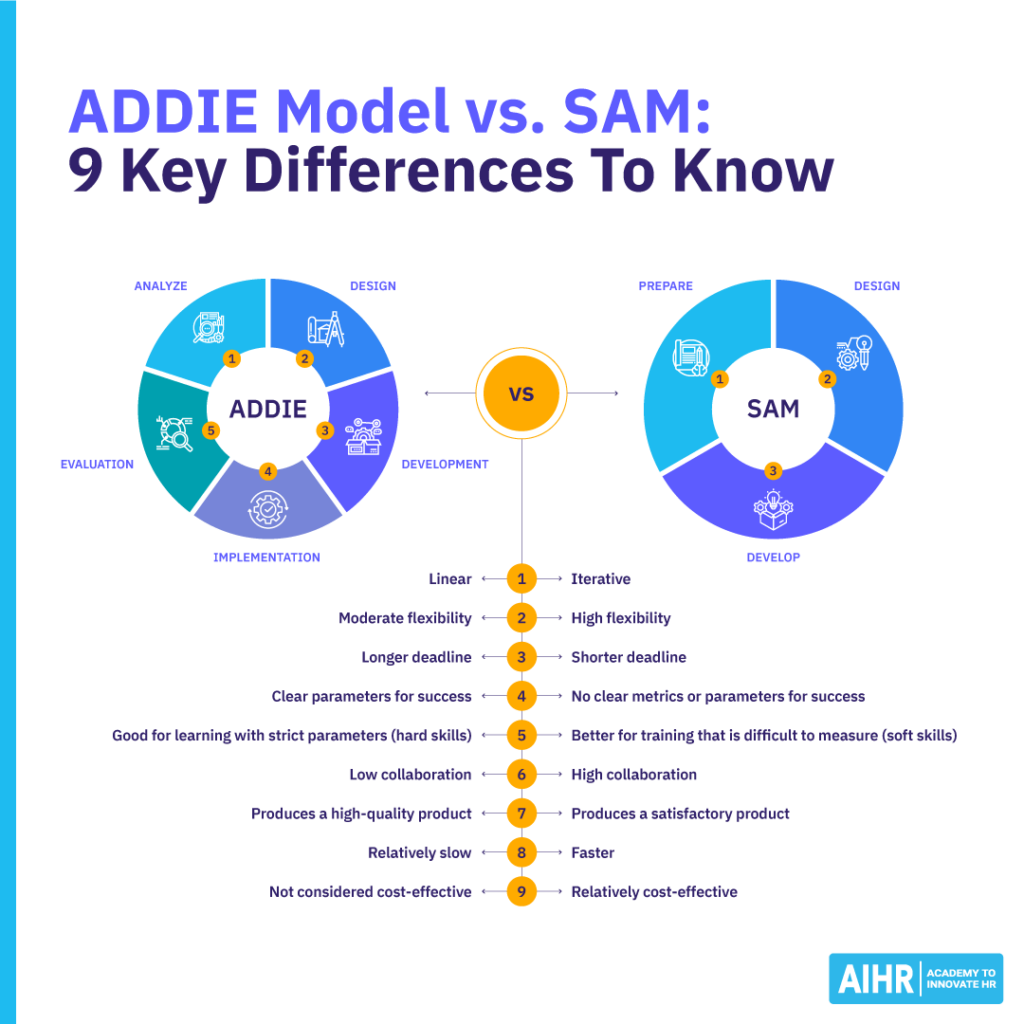
Objective
- ADDIE: Uses clear metrics and parameters, including ROI analysis, to determine effectiveness.
- SAM: Relies on difficult-to-quantify learner feedback.
Type of learning
- ADDIE: Best suited for training and development areas that have strict parameters, such as health and safety training or legal compliance.
- SAM: Effective for training that is hard to measure, including soft skills like communication and teamwork.
Design trajectory
- ADDIE: Linear approach that involves choosing and developing one solution.
- SAM: Cyclical or iterative, meaning it entails testing multiple solutions quickly until it finds the most suitable one.
Stakeholders
- ADDIE: Offers clear objectives and easily replicable results, making it suitable for vendors. However, there is also less opportunity for collaboration.
- SAM: Suitable for a collaborative environment where people can test and amend solutions to maximize their chances of success.
ADDIE vs. SAM vs. Agile Models
Let’s explore the differences between ADDIE, SAM, and Agile models.
Methodological approach
Linear — a structured, methodical approach to learning
Iterative — a fluid approach to learning
Incremental approach
Flexibility level
Moderate flexibility
High flexibility
Very high flexibility
Project timeline
Longer deadline
Shorter deadline
Smaller chunks completed over a fixed period (sprints)
Success metrics
Clear parameters for success
No clear metrics or parameters for success
Parameters for success focused on both process and product
Training type suitability
Good for learning with strict parameters (hard skills)
Better for training that is difficult to measure (soft skills)
Good for training that emphasizes continuous learning, adaptability, collaboration, and iterative improvement
Collaboration level
Low collaboration
High collaboration
High collaboration
Product quality
Produces a high-quality product
Produces a satisfactory product
Produces a high-quality product
Speed of delivery
Relatively slow
Faster
Faster
Cost effectiveness
Not considered cost-effective
Relatively cost-effective
Can be cost-effective
HR tip
No matter which model you use, make sure you have enough time and a large enough budget to discuss the effectiveness of all parties involved and how to improve things.
When to use the ADDIE Model
The ADDIE model should be used:
- When you have a strict deadline
- For complex, long-term training programs
- When the aim is to produce a high-quality, “perfect” final product
- When conducting training with strict parameters
- For employees who learn best in a methodical, structured way.
When to use SAM
The SAM model should be used:
- For projects with a short deadline and quick turnaround time
- When you’re more confident in the development process
- For projects that will benefit from SME involvement
- In adaptive learning environments
- When conducting training that is hard to measure using metrics
- For employees who embrace change and like to think on their feet
- When you want regular feedback.
HR tip
SAM is particularly useful for updating courses, training programs, and other learning materials based on new feedback or policy changes.
Using instructional design models: Best practices for HR professionals
Here are some best practices HR professionals should apply when using instructional design models like ADDIE and SAM to develop and implement training programs.
1. Understand your needs
Understanding the specific needs of your organization and its employees is the first and most important step. This includes training complexity, objectives, timeline, and budget.
For example, if your vision for the training program is set in stone, the ADDIE model will help you build a clearer, more comprehensive program. On the other hand, if your vision is more flexible, SAM will help you develop a dynamic program that is more responsive to feedback.
2. Opt for the best of both models
In many cases, choosing one model and sticking with it is not the best approach, as both have their limitations. Many organizations opt for the best of both worlds by combining the strengths of both models.
For example, you might use ADDIE to build the initial curriculum for your training program, and SAM could then be used to design the best course that will engage your learners and help you fulfill your objectives.
HR tip
Take a hybrid approach and switch between both models during different phases of your training development process.
3. Aim to move your project forward
If you decide to use the ADDIE model to develop and implement your training program but later realize you need to do more iteration, you can still return to the previous phases. However, remember to maintain thorough documentation of each phase (including modifications), reevaluate training objectives, and ensure learning objectives remain aligned with overall business goals.
As long as you observe the above tips, you can revisit the previous phases as often as you need—there are no hard and fast rules here. What’s most important is creating and delivering an effective training program that helps you achieve your goals.
To sum up
When it comes to weighing the pros and cons of ADDIE vs. SAM, neither model is inherently better or worse. Your choice should depend on your organization’s objectives and employees’ needs. Use the guidance in this article to make an informed decision, and don’t be afraid to pivot along the way based on your findings.
Weekly update
Stay up-to-date with the latest news, trends, and resources in HR
Learn more
Related articles
Are you ready for the future of HR?
Learn modern and relevant HR skills, online






